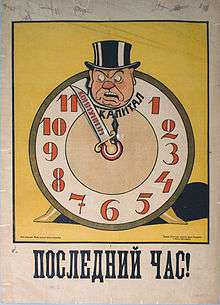Sots Art

Often referred to as “Soviet Pop Art”, Sots Art (short for Socialist Art) originated in the Soviet Union in the early 1970s as a reaction against the official aesthetic doctrine of the state—"Socialist Realism". Socialist Realism was marked by reverential depictions of workers, peasants living happily in their communes, and a young, fit Joseph Stalin.
Vitaly Komar and Alexander Melamid, inventors of the term “Sots Art”, worked in advertising and were frequently employed to use Socialist Realist aesthetics in their ads and brochures.
In the winter of 1972, Komar and Melamid were putting together a design for the Young Pioneers' upcoming summer camp session.
While putting together the signs, which were supposed to convey the strong ideological piety of the Pioneers, Komar and Melamid entertained themselves by using the Socialist Realism tropes they were employing but filling in the content with people they knew, such as their wives and even themselves.
Komar and Melamid continued tweaking well-known Soviet symbols and icons, often replacing Vladimir Lenin and Stalin’s portraits with their own, and signing famous Soviet slogans and catch-phrases with their own autographs.
According to Arthur Danto, Sots Art's attack on official styles is similar in intent to American pop art and German capitalist realism.[1]
References
| Wikimedia Commons has media related to Socialist art. |
- ↑ Arthur Coleman Danto, After the End of Art: contemporary art and the pale of history, Princeton University Press, 1997, p126. ISBN 0-691-00299-1